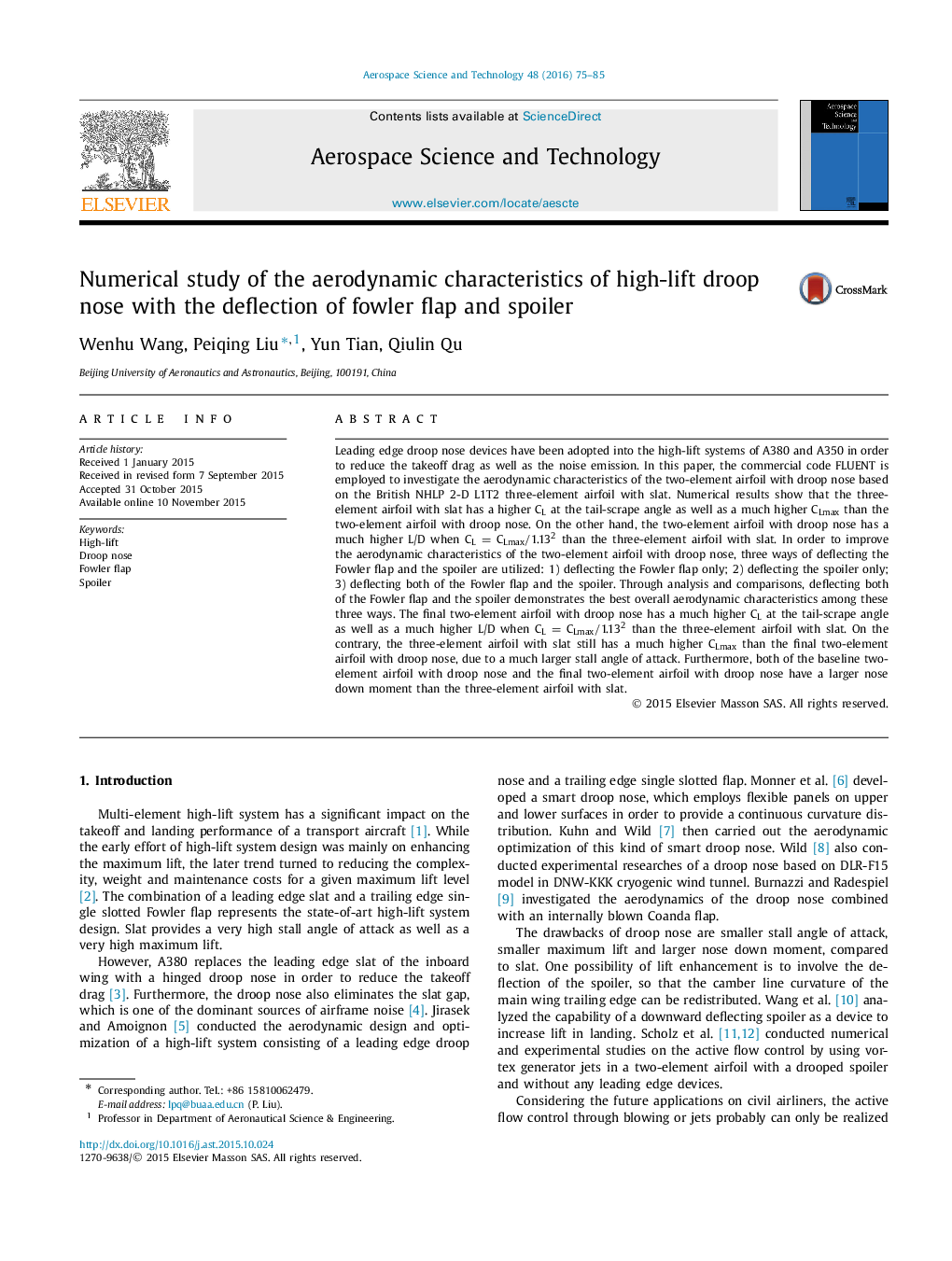| Article ID | Journal | Published Year | Pages | File Type |
|---|---|---|---|---|
| 1717697 | Aerospace Science and Technology | 2016 | 11 Pages |
Abstract
Leading edge droop nose devices have been adopted into the high-lift systems of A380 and A350 in order to reduce the takeoff drag as well as the noise emission. In this paper, the commercial code FLUENT is employed to investigate the aerodynamic characteristics of the two-element airfoil with droop nose based on the British NHLP 2-D L1T2 three-element airfoil with slat. Numerical results show that the three-element airfoil with slat has a higher CL at the tail-scrape angle as well as a much higher CLmax than the two-element airfoil with droop nose. On the other hand, the two-element airfoil with droop nose has a much higher L/D when CL = CLmax/1.132 than the three-element airfoil with slat. In order to improve the aerodynamic characteristics of the two-element airfoil with droop nose, three ways of deflecting the Fowler flap and the spoiler are utilized: 1) deflecting the Fowler flap only; 2) deflecting the spoiler only; 3) deflecting both of the Fowler flap and the spoiler. Through analysis and comparisons, deflecting both of the Fowler flap and the spoiler demonstrates the best overall aerodynamic characteristics among these three ways. The final two-element airfoil with droop nose has a much higher CL at the tail-scrape angle as well as a much higher L/D when CL = CLmax/1.132 than the three-element airfoil with slat. On the contrary, the three-element airfoil with slat still has a much higher CLmax than the final two-element airfoil with droop nose, due to a much larger stall angle of attack. Furthermore, both of the baseline two-element airfoil with droop nose and the final two-element airfoil with droop nose have a larger nose down moment than the three-element airfoil with slat.
Related Topics
Physical Sciences and Engineering
Engineering
Aerospace Engineering
Authors
Wenhu Wang, Peiqing Liu, Yun Tian, Qiulin Qu,
